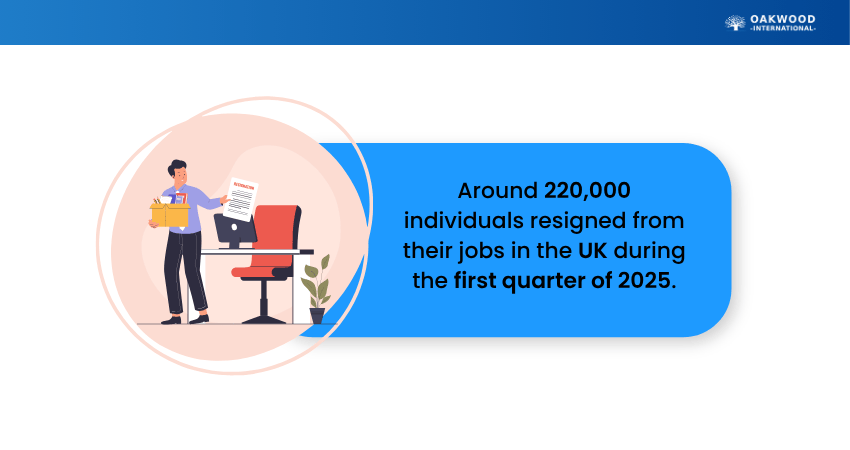Table of Contents


What happens when your best employees decide to leave? It is not just another resignation; it is a serious warning sign. This situation is known as Dysfunctional Turnover, where high-performing staff walk away, taking their skills, experience, and team stability with them. Such exits are often triggered by poor management, limited career growth, or a toxic work culture. This kind of dysfunctional employee turnover can disrupt productivity and weaken overall performance.
In this blog, we’ll explore what is Dysfunctional Turnover, why it occurs, how it affects businesses, and the steps you can take to prevent it. Because when great people go, great opportunities go with them.
Table of Contents
What is Dysfunctional Turnover?
What is Employee Turnover?
Key Causes of Dysfunctional Turnover
How Dysfunctional Turnover Impacts Your Organisation?
How to Prevent Dysfunctional Turnover?
Measuring Dysfunctional Employee Turnover
Conclusion
What is Dysfunctional Turnover?
Dysfunctional Turnover refers to the departure of employees whose exit negatively affects the organisation. Unlike general turnover, which includes all employee exits, Dysfunctional Turnover focuses specifically on the loss of high-performing, skilled, or strategically important employees.
Key Characteristics:
The employees who leave are valuable to the organisation.
Their departure leads to disruption, loss of knowledge, or decline in performance.
It often signals underlying issues like poor management, lack of growth opportunities, or a toxic work culture.
Imagine a company loses several top engineers who were leading key projects. Replacing them takes months, and the new hires need extensive training. This not only delays product launches but also affects team morale and increases costs; this is Dysfunctional Turnover.
What is Employee Turnover?
Employee turnover refers to the rate at which employees leave an organisation and are replaced by new hires.
It covers:
- Voluntary Departures: when employees resign on their own
- Involuntary Departures: when employees are laid off or terminated
Tracking turnover helps organisations understand retention levels, workforce stability, and potential issues in the workplace. While some turnover is healthy, high turnover often signals dissatisfaction, poor management, or a lack of growth opportunities.
Key Causes of Dysfunctional Turnover
Dysfunctional Turnover often stems from deeper issues within the workplace. Below are some common factors that can drive top-performing employees to leave an organisation:

1. Ineffective Management Approaches
Poor communication, unclear expectations, and inconsistent feedback
- Micromanagement or lack of autonomy for high performers
- Little recognition or appreciation for results and effort
- Inadequate coaching, mentoring, or support during challenges
- Unfair workload distribution or favouritism within the team
2. Limited Career Advancement Opportunities
- No visible career paths or role progression frameworks
- Few stretch assignments, cross-functional projects, or new responsibilities
- Limited access to training, certifications, or learning budgets
- Slow or opaque promotion processes; unclear criteria for advancement
- Lack of succession planning for critical roles
3. Insufficient Pay and Benefits
Base pay below market benchmarks for similar roles
- Weak variable pay (bonuses, incentives) tied to unclear metrics
- Limited or outdated benefits (healthcare, retirement, wellness)
- No equity/long-term incentives for high-impact contributors
- Pay compression where new hires earn equal to/more than top performers
4. Hostile or Toxic Work Environment
Tolerance of bullying, discrimination, or disrespectful behaviour
- Persistent conflict, gossip, or blame culture across teams
- Low psychological safety; employees fear speaking up or taking risks
- Poor work–life balance due to unrealistic deadlines or constant crises
- Misalignment with stated values; leaders don’t model expected behaviours
Master the art of nurturing, engaging, and elevating talent with our Talent Management Training - Sign up now!
How Dysfunctional Turnover Impacts Your Organisation?
Here’s how Dysfunctional Turnover can impact your organisation:

1. Reduced Overall Productivity
When high-performing employees leave, productivity naturally declines. Their absence can delay projects, overburden remaining staff, and lead to burnout. Additionally, significant time and resources are diverted to recruiting and training new hires, slowing progress until replacements are fully up to speed.
2. Decline in Innovation and Creativity
Losing forward-thinking employees reduces the flow of fresh ideas and diverse perspectives. Without these contributors, brainstorming sessions become less dynamic, projects risk stagnation, and outdated methods may persist due to a lack of challenging voices in the organisation.
3. Loss of Institutional Knowledge
Departing employees often take with them valuable knowledge, best practices, and client relationships. This loss can result in repeated mistakes, longer onboarding periods for new hires, and a disruption in service quality, especially when knowledge has not been well documented.
4. Damage to Employer Reputation
High turnover rates can harm an organisation’s public image, signalling instability to job seekers and clients. Negative reviews from former employees may deter top talent, while stakeholders may question the company’s ability to retain skilled professionals.
5. Erosion of Company Culture
Frequent departures can weaken team cohesion and morale. As trusted colleagues leave, employees may feel disconnected from the organisation’s values and vision, leading to declining engagement levels and a potential loss of trust in leadership.
6. Challenges in Attracting Top Talent
Organisations with a reputation for high turnover often struggle to attract skilled professionals. The Recruitment Process becomes more difficult and expensive, requiring stronger incentives and extended search periods to secure qualified candidates, which further strains resources.
How to Prevent Dysfunctional Turnover?
To prevent valuable employees from leaving, organisations need to focus on a mix of leadership, culture, compensation and support. The following approaches can help reduce Dysfunctional Turnover and strengthen workforce stability:
1. Improving Management and Leadership
Managers have a big influence on Employee Retention! Organisations can invest in leadership training that focuses on empathy, communication and accountability. When people feel respected and guided by their Managers, they are more likely to stay and grow in the same organisation.
2. Boost Employee Engagement and Job Satisfaction
The only reason employees stay longer in an organisation is because they feel involved, recognised and satisfied with their work. Encourage team input, celebrate achievements and ensure roles are meaningful. A positive work culture keeps motivation high and turnover rates low over time.
3. Offer Competitive Pay and Benefits Packages
Fair pay and strong benefits are the best ways to show that employees are valued. Review your compensation structure regularly and offer perks that matter. For example, you can opt for Healthcare, bonuses and Wellness Programmes.
4. Support Career Growth and Development Paths
Employees want to advance their careers within your company rather than seeking growth elsewhere. Offer learning opportunities, mentorship, and clear progression plans. When they see a future with your organisation, they are more likely to remain committed over the long term.
5. Conduct Stay Interviews and Exit Interviews
Stay interviews help uncover what makes employees happy and loyal and exit interviews reveal reasons for leaving. Use the feedback from these interviews to spot patterns and improve your culture, communication, and retention strategies proactively and effectively.
6. Promote Work-life Balance and Flexibility
It’s important to offer flexible hours, hybrid work options and prompt support for personal or emergency needs. When employees feel trusted to balance their work and life, they become more satisfied, less stressed and more committed to staying with your company.
7. Address and Prevent Employee Burnout
Always keep an eye on workloads, encourage regular breaks and please promote realistic deadlines. Additionally, you must open up conversations about stress and wellbeing. It helps to prevent burnout and allows employees to stay productive, engaged and emotionally healthy in the long run.
Build a work culture where every voice matters. Learn how in our comprehensive Employee Engagement Training - Register now!
Measuring Dysfunctional Employee Turnover
To effectively address Dysfunctional Turnover, you first need to measure it. Tracking this specific type of turnover helps identify patterns and highlight problem areas within your organisation. Here’s how you can measure it:
Step 1: Identify Key Talent
Define who qualifies as high-performing or critical (e.g., based on performance reviews, skill sets, leadership potential).
Step 2: Track Departures
Monitor how many of these key individuals leave over a specific period (monthly, quarterly, or annually).
Step 3: Calculate Dysfunctional Turnover Rate
Use a formula like:

Step 4: Compare with Overall Turnover
This helps assess whether the organisation is losing the right people or the wrong ones.
Example
- Start-of-Year Employee Count: 200
- End-of-Year Employee Count: 190
- Total Terminations: 30
- High-Performing Employees Who Left: 6


Explanation:
A 3.08% Dysfunctional Turnover rate means that just over 3% of the total workforce consisted of high-performing employees who left. While this percentage may seem small, the impact on productivity, morale, and team dynamics can be significant, especially if this pattern continues over time.
Conclusion
Dysfunctional Turnover means losing your best talent, not just employees. Its impact reaches beyond recruitment costs, affecting productivity, culture, and long-term growth. By addressing its causes and applying smart retention strategies, organisations can protect top performers and build a stronger, future-ready workforce. Act now to retain the talent that shapes your success.
Become the great leader every great team deserves. Sign up for our Successful People Management and Team Leadership Course now!


 Back
Back



 Back to Catagories
Back to Catagories





 + 44 7452 122728
+ 44 7452 122728









